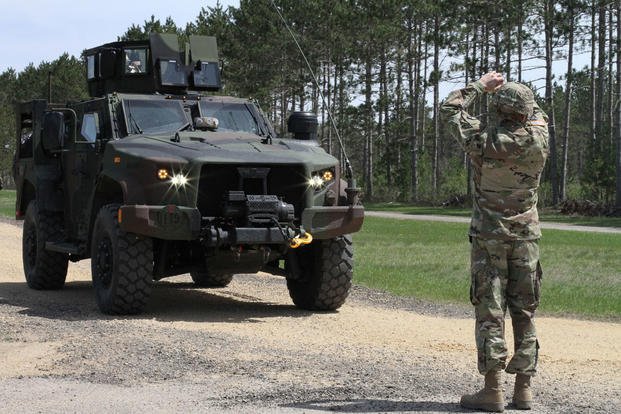The Army's next top enlisted leader is calling on soldiers to demand all vehicle operators get the training they need after a wave of accidents have killed or injured more than 50 troops and military cadets since April.
Sgt. Maj. Michael Grinston, who was named the 16th sergeant major of the Army on Tuesday, said soldiers must demand accountability from their commands when it comes to proper vehicle training. Grinston currently serves as the top enlisted leader of Army Forces Command, which trains soldiers for combat.
Too often, he said, soldiers are being asked to drive or ride in vehicles that they or the driver aren't qualified to operate.
"Tragically," Grinston said in a new video message to the force, "this describes recent scenarios where soldiers have died."
Related content:
-
Training Not to Blame for String of Fatal Vehicle Rollovers, Marines Say
-
West Point Identifies Cadet, a Promising Wrestler, Killed in Truck Crash
-
Marine Killed in Australia Humvee Accident; 3rd Rollover Death in 6 Weeks
Most on-duty soldiers' deaths happen in Army motor vehicle mishaps, Grinston said. Most of those mishaps, he said, are caused by inadequate unit-driver training programs.
"Regardless of the echelon of command you serve, demand accountability in yourself and in others," he told the force. "Ensure operators are adequately trained and licensed on every piece of equipment every time."
Last year, as the Washington Examiner noted Tuesday, the Army stopped requiring soldiers to complete Accident Avoidance Course Training at the unit level, per a directive released by Army Secretary Mark Esper.
The online course used to be required training every four years for any soldier operating Army vehicles.
"Instruction contained in the Army Traffic Safety Training Program fulfills required training in accordance with DODI 6055.04," the Army's training website states, referencing the service directive put out by Esper. "Since this is no longer a regulatory requirement and the [course] is dated, the [Army Learning Management System] will no longer offer it effective 27 April 2018."
Three Army vehicle mishaps over the last four weeks killed three people and injured 36 others.
On June 6, West Point Cadet Christopher Morgan died when his Light Medium Tactical Vehicle rolled over. Twenty-one others were injured. The vehicle was being driven by two soldiers.
Three days prior, Nevada Army National Guard Staff Sgt. David Gallagher died when his M1 Abrams tank rolled over at Fort Irwin, California. Three others were hurt.
Last month, Staff Sgt. Jacob Hess died and a dozen other soldiers were hurt in a rollover accident involving several Humvees at the Joint Readiness Training Center at Fort Polk, Louisiana.
Three Marine Corps vehicle rollovers have also killed three and injured nine.
On May 28, Lance Cpl. Hans Sandoval-Pereya died when the Humvee he was riding in rolled over. One more Marine was hurt.
Less than three weeks prior, 1st Lt. Conor McDowell died when his light armored vehicle flipped. Six other Marines were hurt.
And on April 13, Staff Sgt. Joshua Braica was hurt and later died from his injuries after his ultralight all-terrain vehicle flipped at Camp Pendleton, California. Two more troops were injured.
Unlike Grinston's message, Marine officials have not been as quick to single out training problems in that string of fatal accidents.
"At this time, training and/or material deficiencies do not appear to be contributing factors," Capt. Christopher Harrison, a Marine spokesman at the Pentagon, told Military.com. Safety investigations into the accidents remain ongoing, he added, and could identify shortfalls that could help prevent similar mishaps.
-- Gina Harkins can be reached at gina.harkins@military.com. Follow her on Twitter @ginaaharkins.













